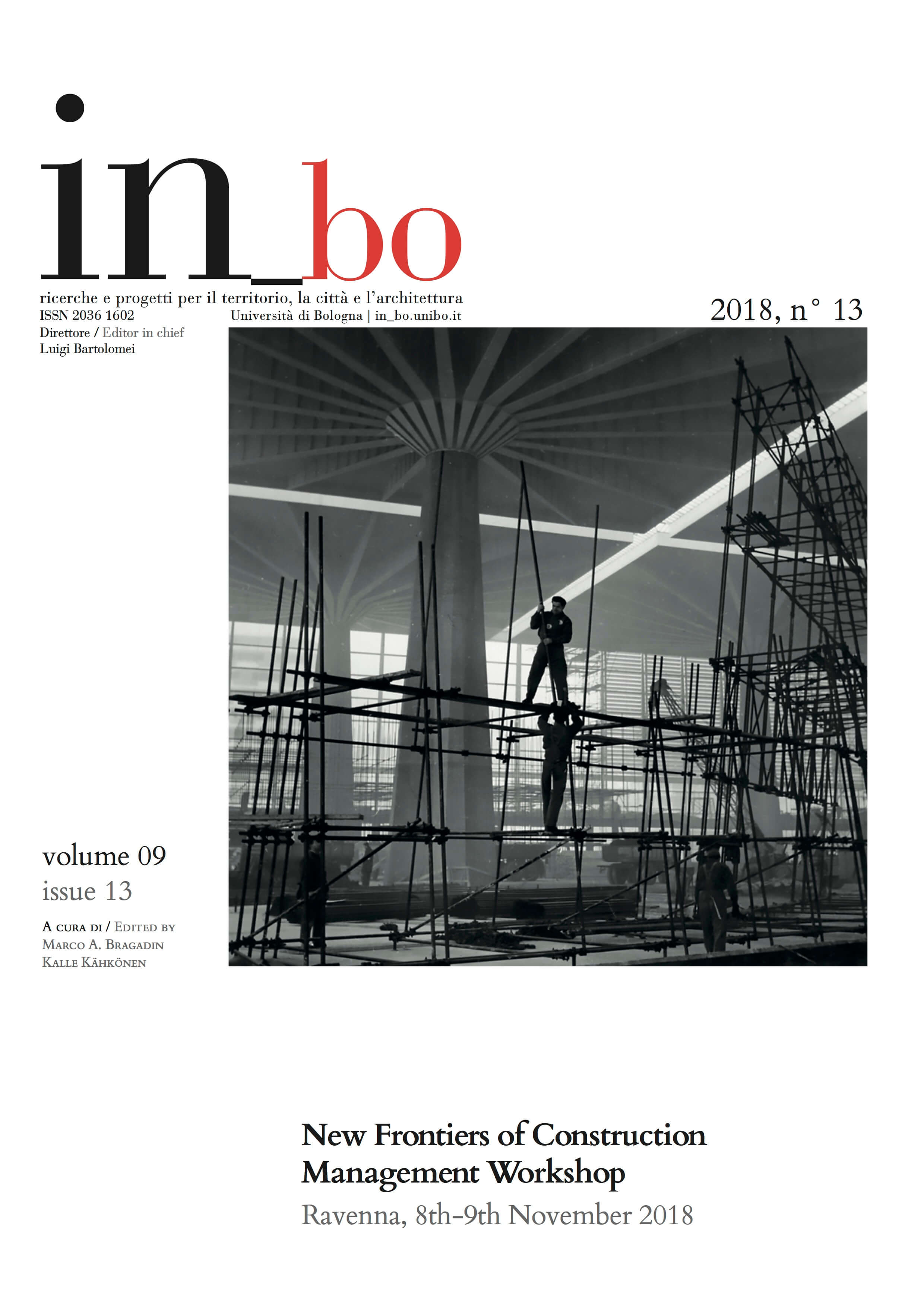A Project Framework to Introduce Virtual Reality in Construction Health and Safety
DOI:
https://doi.org/10.6092/issn.2036-1602/8830Keywords:
Health and Safety, Virtual Reality, BIM, Workers’ TrainingAbstract
Building construction is considered a complex, dynamic and highly hazardous process which embraces many factors that are potentially dangerous to workers. Many studies proved that the improvement of preventive and proactive measures -dynamically included in the building design, planning and construction- could reduce site accidents as well as increase the site productivity.
In this context, process management models and information visualization techniques such as Building Information Modelling (BIM) and Virtual Reality (VR) seem to be devoted to strongly contribute to the advancement of the current safety management practices. For this reasons, the presented contribution starts with a short review of the adoption of BIM and BIM-related digital technologies for risk management together with VR application for Construction Health and Safety which aim to generate immersive environments from which workers can experience safe insights into the way the real construction site works.
The main objective of this contribution is to review existing proposals in this field of construction health and safety as related to ICT technologies, especially BIM and Virtual Reality, in order to propose, at the end, a project framework able to guide future researches and applications on the use of BIM-enabled Virtual Reality for Safety purposes for site design validation and related workers’ training.
Downloads
Published
How to Cite
Issue
Section
License
Copyright (c) 2018 Vito Getuli, Tommaso Giusti, Pietro Capone, Tommaso Sorbi, Alessandro Bruttini
Copyrights and publishing rights of all the texts on this journal belong to the respective authors without restrictions.
This journal is licensed under a Creative Commons Attribution-NonCommercial 4.0 International License (full legal code).
See also our Open Access Policy.
Metadata
All the metadata of the published material is released in the public domain and may be used by anyone free of charge. This includes references.
Metadata — including references — may be re-used in any medium without prior permission for both not-for-profit and for-profit purposes. We kindly ask users to provide a link to the original metadata record.







